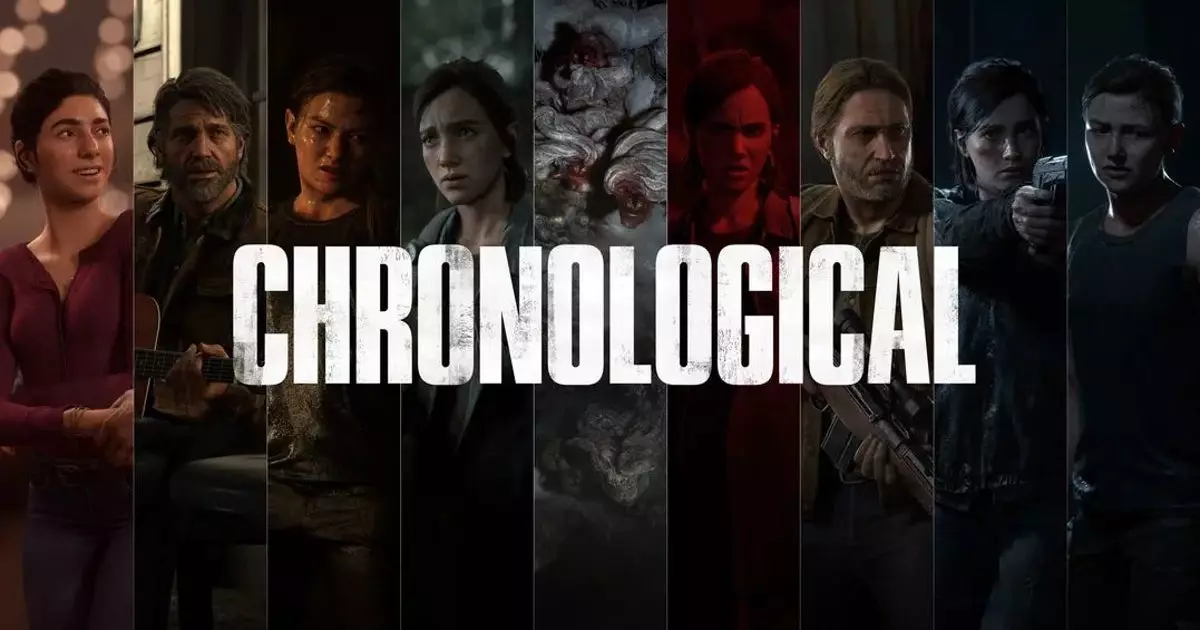Storytelling, whether in literature, film, or video games, has long relied on a linear progression to guide audiences through a carefully crafted universe. The Last of Us Part II exemplifies this tradition with its complex, fragmented storytelling that weaves together multiple timelines through flashbacks and present-day events. This non-linear narrative is not merely an artistic choice but a deliberate method to deepen emotional engagement and explore themes like revenge, trauma, and hope. However, the recent addition of a chronological mode by Naughty Dog challenges this established norm, prompting a critical reflection on whether disrupting narrative structure truly benefits the player’s experience.
Linearity, while seemingly straightforward, serves as a scaffold that helps players and viewers process character development and plot twists progressively. Contrarily, linear storytelling’s resistance to fragmentation preserves the suspense and emotional resonance that underpin powerful narratives. By stripping away this structure, we risk diluting the impact of pivotal moments, converting a carefully woven tapestry into a disjointed puzzle. If story is a journey meant to evoke specific emotional highs and lows, then a straightforward chronological mode might undermine this intent, reducing complex characters and themes into a predictable sequence.
What Do We Gain or Lose with Chronological Replay?
Naughty Dog argues that experiencing The Last of Us Part II’s story in chronological order could offer newfound insights—perhaps revealing subtle links or providing clarity where ambiguity prevails. They suggest that players would see Ellie’s growth from her guitar gift to her evolving identity, grasping the narrative’s emotional threads more plainly. But this perspective raises fundamental questions: Is clarity always conducive to understanding? Or does it risk simplifying a narrative that thrives precisely because of its layered, non-linear delivery?
While some fans may find value in chronological exploration—especially those interested in dissecting the story with fresh eyes—others may find it diminishes the narrative’s artistic integrity. The game’s richness stems from its reluctance to present a straightforward tale; it demands active engagement, encouraging players to piece together motivations, backstories, and relationships that unfold out of chronological order. Removing this complexity could potentially flatten the story, robbing it of the tension and emotional weight that come from gradual revelation.
The Danger of Misinterpreting Creative Choices
The debate surrounding this mode also illuminates a wider issue: the misunderstanding of storytelling as a flexible art form. Naughty Dog’s attempt to repackage its narrative in a linear fashion perhaps underestimates the sophistication of their audience’s emotional intelligence. Some view non-linearity as a sign of narrative bravado, a way to challenge expectations and immerse players more deeply. Others see it as a game mechanic that doesn’t necessarily enhance the story but rather complicates it unnecessarily.
Furthermore, dismissing the existing storytelling as “meticulously put together” yet offering a tool that alters its core structure might come across as a contradiction. The studio’s enthusiasm for this new mode suggests a belief that the story’s impact is proportional to the order in which it’s presented, a notion that undermines the art of storytelling itself. To dictate that a story only works in a certain sequence dismisses its inherent fluidity and the interpretive power of the audience.
The Broader Implications for Narrative Design
This move by Naughty Dog is symptomatic of an increasing obsession within media to control how stories are experienced, often at the expense of artistic integrity. It echoes a broader trend where studios prioritize ‘user-friendly’ features that do little to enhance storytelling’s depth and more to offer superficial novelty. The release of a “chronological mode” feels less like a genuine artistic experiment and more like a marketing gimmick, hinting at a discomfort with unconventional narratives that challenge conventional storytelling norms.
True narrative innovation encourages embracing complexity, ambiguity, and emotional ambiguity—not simplifying or reordering stories to fit a more digestible format. If anything, this approach trivializes the art form and undervalues the dedicated craftsmanship involved in weaving layered, nonlinear stories. It risks turning a psychologically intense and thematically profound game into a mere sequence of events easily digestible in chronological order—something that may appeal to a mass audience but does little to honor the narrative’s artistic depth.
The addition of a chronological mode to The Last of Us Part II raises important questions about storytelling’s purpose and power. It exposes a superficial desire to make stories more accessible at the expense of their integrity. As storytellers and consumers, we should question whether simplifying experiences truly benefits art or if it merely panders to a desire for immediate clarity. Ultimately, narrative complexity is what elevates storytelling from mere entertainment to an immersive exploration of human experience. Removing this complexity risks reducing stories to superficial amusements, stripping away their potential to inspire, challenge, and resonate on a profound level.

